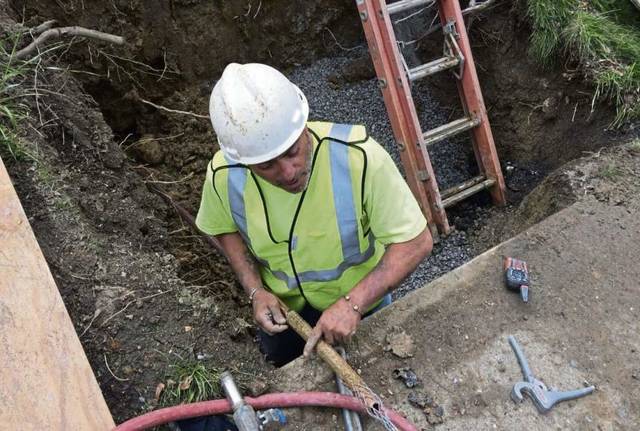PWSA chair says all lead lines will be replaced by 2026
The Pittsburgh Water and Sewer Authority replaced more than 3,000 public-owned lead water lines in the city last year — far more than the 855 mandated by Pennsylvania regulators — and the authority intends to continue that pace in 2020, officials said.
PWSA since 2016 has struggled to reduce lead levels that exceeded a federal threshold of 15 parts per billion and is addressing the problem by replacing all authority-owned lead water lines in its service area, which includes about 300,000 people in Pittsburgh and the surrounding area.
While working on public lines, crews also replace privately-owned lines known as laterals to homes and businesses when they find they are made of lead. PWSA does not charge the owner.
Paul Leger, who chairs the PWSA board of directors, said the authority anticipates having all lead lines replaced by 2026.
“We should have everything significant replaced by then,” he said.
The authority through the first half of 2020 will be replacing lead lines in Oakland, Uptown, Spring Hill/City View, Marshall-Shadeland Lawrenceville, Bloomfield and Garfield. After that it will replace lead lines as it installs new water mains in neighborhoods.
Mora McLaughlin, a spokeswoman for PWSA, said the process is more efficient because all water pipes can be replaced at the same time.
“If we find a private lead line attached to one of those water mains we’ll replace both,” she said.
Last year, the authority replaced 3,202 public and 2,363 private lines, McLaughlin said. She said PWSA has plans to replace 3,000 public lines in 2020.
“Our initial inventory indicated that there were 12,300 (public) lead lines in the system,” she said. “Since that inventory was made, we replaced approximately 5,000, leaving 7,300 remaining lead lines.”
Officials do not know how many privately-owned lines are made of lead.
Last year, PWSA began adding lead-inhibiting orthophosphate to water, and testing has indicated lead levels are dropping.
DEP requires the authority to conduct testing every six months. Testing between July and December 2018 indicated levels were at 20 parts per billion. The most recent round of tests between January and June 2019 indicated 17.52 ppb. McLaughlin said the authority has yet to receive July to December test results.
PWSA is paying for the replacement program through $49 million in low-interest loans and grants from the Pennsylvania Infrastructure Investment Authority.
Remove the ads from your TribLIVE reading experience but still support the journalists who create the content with TribLIVE Ad-Free.

